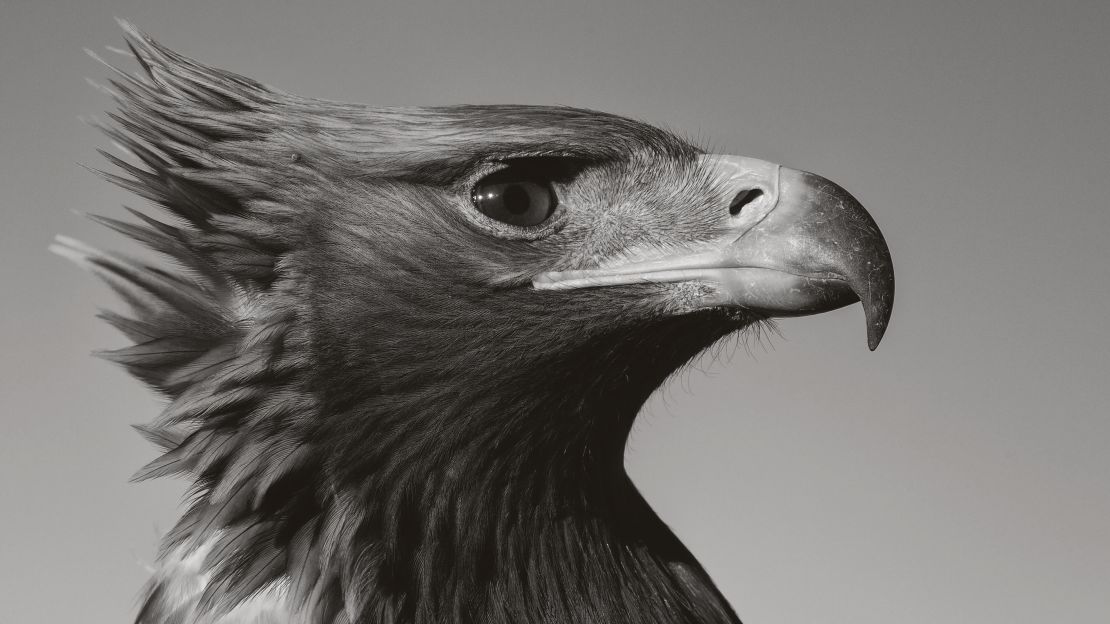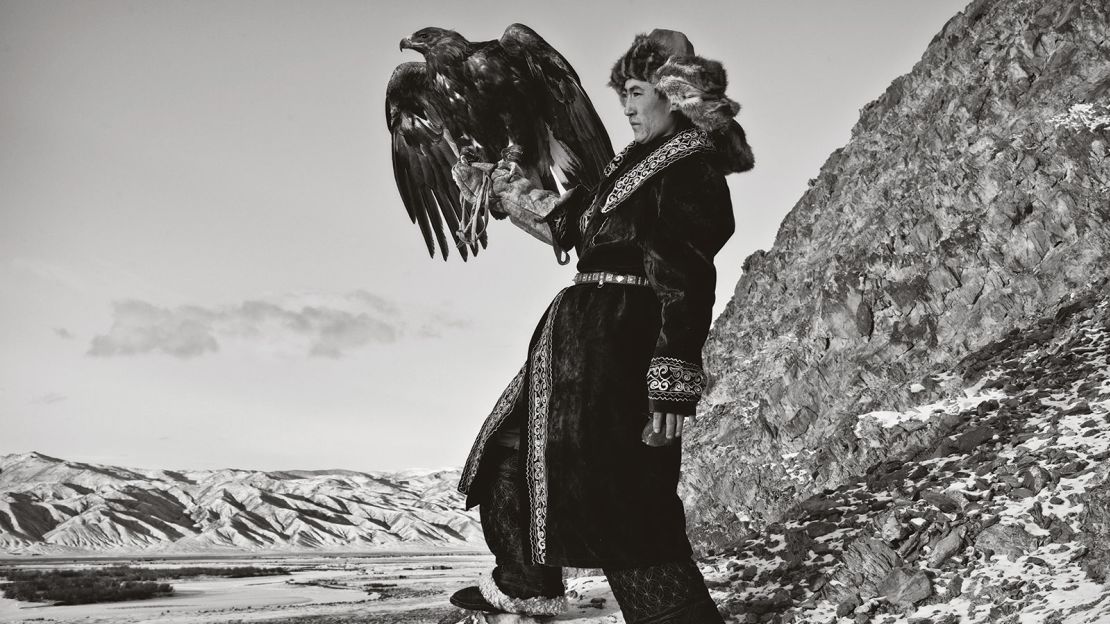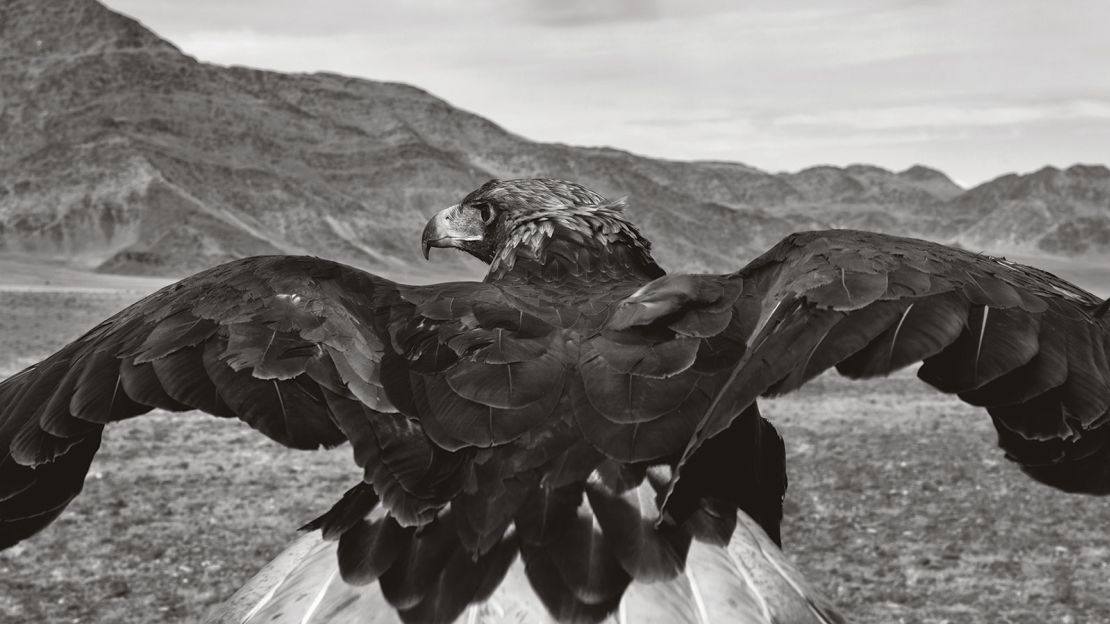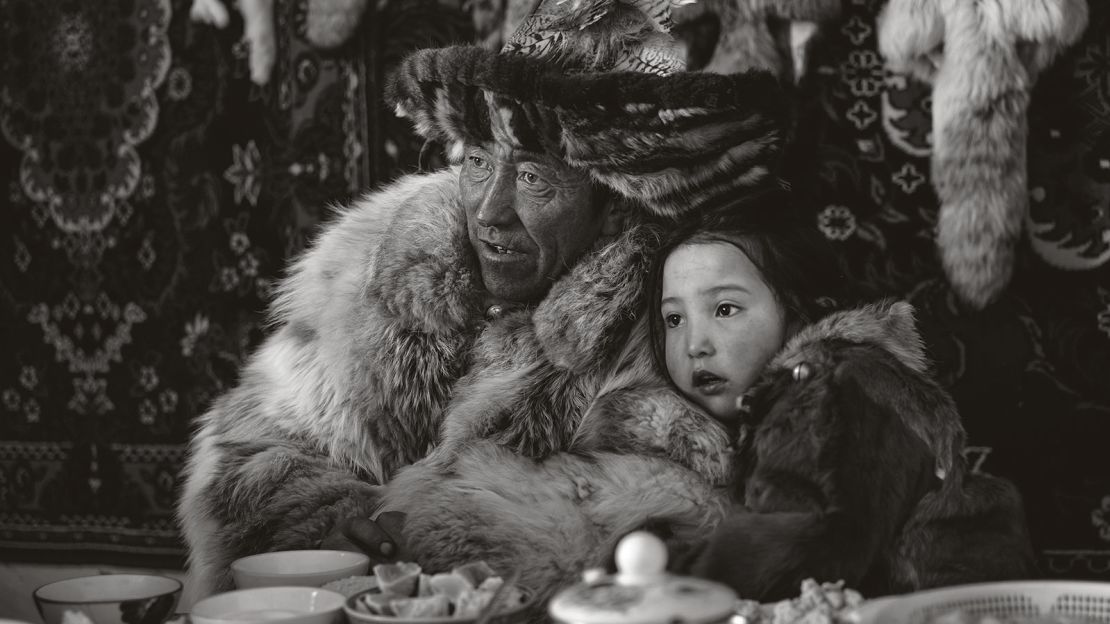Story highlights
Photographer Palani Mohan spent five years documenting the last remaining Altai Kazakh eagle hunters
There are only 50-60 "true" eagle hunters remaining in the region
He has produced a photo essay and a new book, titled "Hunting with Eagles: In the Realm of the Mongolian Kazakhs", featuring the body of work
In the wild mountains of western Mongolia, where temperatures drop to -40°F in winter, only the toughest survive. India-born, Australia-raised photographer Palani Mohan discovered this the hard way, when he embarked on an ambitious project to document the last remaining Altai Kazakh eagle hunters.
“There are only 50-60 of what I regard to be the true eagle hunters still alive. They’re getting old, and each winter claims a few more,” Palani tells CNN.
The Altai Kazakhs are thought to be unique in their hunting tradition.
First, the hunter treks up a mountain on horseback, holding his golden eagle. From the ridge, they wait and watch. When prey is spotted – usually a fox - the hunter charges towards it, and the eagle goes in for the kill.

Palani Mohan was 17 and living in Sydney when he first saw one of these eagle hunters wearing a fox-skin coat in a newspaper. The image stayed with him.
Decades later when he was living in Hong Kong, he received a discount offer on a flight to Mongolia.
“I just took off, with very little planning,” he says. “Soon after I got there I realized there was a bigger story there, one that needed to be told.”
In a project spanning five years, Mohan visited four times, spending more than a month there each time, often living with the hunters themselves.
“Many times the only reason I returned was because I got so ill,” he says. “My hands were frozen, my feet were a mess. I had an incredibly difficult time keeping my camera batteries warm. This was the hardest thing I ever had to do.”

As well as battling the extreme conditions, Mohan was also dealing with the unpredictability of the eagles.
“The eagles don’t sit for you, they are wild birds,” he said. “I was missing images all the time. There’s nothing more frustrating than seeing a shot, then it disappears like water on a hot marble plate.”

Despite the challenges, Mohan produced a photo essay comprising 90 breathtaking images, displayed in a new book. They tell a story of a beautiful yet brutal landscape, a strong and hardy breed of hunters and the remarkable bond they develop with their eagles.
The photographs are given an added sense of depth and mystery by their dramatic duotone, an effect which Mohan says was deliberate.
“The other-worldliness of these images meant they deserved to be photographed in black and white,” he said. “Also, there wasn’t much color. The landscape was brown, the eagle was dark grey, the hunters’ clothing was dark, and they had dark weathered faces, which work really well in black and white.”

As well as producing a body of art, Mohan’s aim was also to bring the subjects to life, and to chronicle their culture before it becomes too late.
“I hope people understand that people still live this way and it’s not just something from a museum,” he says. “But it’s changing and evolving, and the younger generation don’t really want to be eagle hunters.”
Mohan hopes he can return to the mountains soon, to show his new friends the visual legacy they will soon leave behind.
“They found me incredibly eccentric, they didn’t understand why I kept coming back to the cold, leaving my family in Hong Kong,” he says. “But I hope that when I return with a copy of the book, translated into Kazakh, maybe they will get a better understanding.”

















